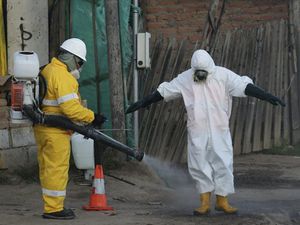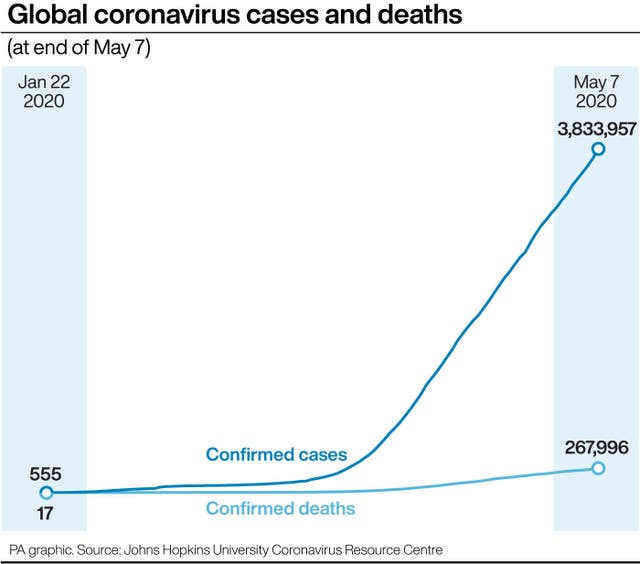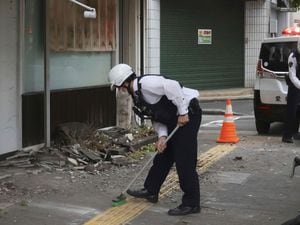New coronavirus cases in China and South Korea as world lockdowns ease
South Korea’s 13 fresh cases reported on Friday were its first increase higher than 10 in five days.

China and South Korea both reported more coronavirus infections Friday after reopening economies damaged by devastating outbreaks.
Governments around the world are opting to accept the risks of easing pandemic-fighting restrictions, that left huge numbers of people without income or safety nets.
In the US, some governors are disregarding or creatively interpreting White House guidelines in easing their states’ lockdowns and letting businesses reopen.

An Associated Press analysis found 17 states appeared to have not met one of the key benchmarks set by the White House for loosening up – a 14-day downward trajectory in new cases or positive test rates.
Worries over future waves of infections reflect the difficulty of fighting a disease that leaves many of those infected with scant or no symptoms, even as thousands lose their lives to pneumonia and other virus-related illness.
South Korea’s 13 fresh cases reported on Friday were its first increase higher than 10 in five days. A dozen were linked to someone who visited three nightclubs in Seoul last weekend.
“A drop of ink in clear water spreads swiftly,” vice health minister Kim Gang-lip said, urging vigilance to guard hard-won gains. “Anyone can become that drop of ink that spreads Covid-19.”
After its caseload waned from hundreds a day to a handful daily in recent weeks, South Korea has relaxed social distancing guidelines, scheduled school reopenings and allowed professional sports to resume without fans in the stands.

In China, where coronavirus first emerged, authorities reported 17 new virus cases on Friday, including 16 that tested positive but were not showing symptoms.
No new deaths have been reported for more than three weeks, and just 260 people remain in hospital to be treated for Covid-19.
The dire stakes of the pandemic have contributed to a surge in anti-foreigner sentiment, including denying medical treatment to migrants and refugees, UN secretary-general Antonio Guterres said.
He appealed for an end to the “tsunami of hate and xenophobia, scapegoating and scare-mongering”.
The UN is urging governments, companies and billionaires to contribute to a 6.7 billion dollar (£5.4 billion) appeal to fight coronavirus in poor countries, warning that failure to help could cause a “hunger pandemic”, famine, riots and conflict.

Worldwide, the virus has infected more than 3.8 million people and killed over 268,000, according to a tally by Johns Hopkins University based on official data.
But everywhere, limited testing, differences in counting the dead and concealment by some governments undoubtedly mean the true scale of the pandemic is much greater.
This week, University of Washington researchers nearly doubled their projection of deaths in the US to about 134,000 through to early August, largely because the loosening of stay-at-home restrictions will mean the virus spreads to more people.
As governments grapple with when to restart their economies, the Trump administration shelved a 17-page Centres for Disease Control and Prevention document with step-by-step advice to help local authorities do it safely.

Adding to pressure to ease restrictions are the hundreds of businesses collapsing by the day.
Over 33 million Americans have applied for unemployment benefits over the past seven weeks, and a highly anticipated report on Friday is expected to show US joblessness as high as 16%, a level not seen since the Great Depression nearly a century ago.
Public health experts say the guidance from the White House has been anything but clear, while pushing responsibility for expanding testing on to the states.
It’s like “an orchestra without a conductor,” said Lawrence Gostin, a public health expert at Georgetown University.
States share some blame, he said, but “the responsibility for co-ordinating and enforcing and implementing a national plan comes from the White House”.





